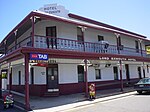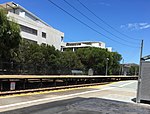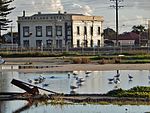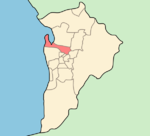Ethelton, South Australia
Lefevre PeninsulaSuburbs of AdelaideUse Australian English from August 2019
Ethelton is a north-western suburb of Adelaide 13 km (8.1 mi) from the CBD, on the Lefevre Peninsula, in the state of South Australia, Australia. It is a residential suburb within the local government area of City of Port Adelaide Enfield, adjacent to the suburbs of Semaphore, Semaphore South, Glanville and New Port. It is bounded to the north by Hart Street, to the south by Bower Road and in the west by Swan Terrace and in the east by Causeway Road.
Excerpt from the Wikipedia article Ethelton, South Australia (License: CC BY-SA 3.0, Authors).Ethelton, South Australia
Pelham Street, Adelaide Ethelton
Geographical coordinates (GPS) Address Nearby Places Show on map
Geographical coordinates (GPS)
| Latitude | Longitude |
|---|---|
| N -34.850335 ° | E 138.489005 ° |
Address
Pelham Street
Pelham Street
5015 Adelaide, Ethelton
South Australia, Australia
Open on Google Maps




